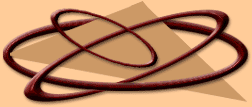Title of Journal
Article Depression in Children and Adolescents
Title of Journal American Family Physician
Volume 62/No. 10_________________ Date _11_/15_/ 2000__ Page Number(s)
2297-2308, 2311-2______
·
What
organization is responsible for publishing the journal you chose?
American Academy of Family Physicians
·
What
is your overall evaluation of this article?
_____Poor ______Fair ______Good ___X____Very Good _____Excellent
·
Why
did you choose to review this particular article?
This is an assigned
article, but it was very interesting to me as it explained clearly basic information regarding childhood and adolescent depression
disorders.
·
How would you rate this article as a tool for teaching
a student about cardiopulmonary physiology, radiography, or another allied health specialty? (This is a confusing question to me. Are you asking if this
article is applicable to these areas, or are you asking if these types of students could synthesize this material?)
Students:
____Poor
__ _Fair ___X_Good _____Very Good _____Excellent
Teachers:
____Poor
____Fair ____Good __X__Very Good _____Excellent
Patients:
____Poor
__ _Fair ___X_Good _____Very Good _____Excellent
·
Comment
on the readability of this article.
For a health care professional
with a general knowledge of pharmacology, this would be an easy read. If the
allied health care professional was more removed from the pharmacology aspect of patient care and was thus less familiar with
the effects of these medicines and how they affect the human body, it may not be as easily absorbed and internalized. Certainly, there are parts of the article that someone with reasonable intelligence
could read and understand for instance, the childhood depressive disorders chart.
Each subheading described
the ensuing information well. It was well organized and flowed in an appropriate
manner from signs and symptoms, diagnosis, treatment, etc.
·
Course
Topics covered:
Sensitivity, specificity, double-blind, randomized, placebo-controlled
·
Brief Summary:
As the opening abstract indicates, this article explains the prevalence of depression in children and adolescence. It lists signs & symptoms, diagnosis, criteria for diagnosis, and treatment opinions
with specific drug regimens. The aim of this article is to equip family practice
physicians better in how to identify, refer and treat depression in children and adolescence.
·
Identify
and attempt to explain three (3) terms, procedures or concepts that were unfamiliar to you when reviewing this article.
I have never actually seen a chart that lists signs/symptoms, criteria, and treatment interventions for childhood
depressive disorders. I really have never thought of children being depressed.
Only being generally versed in pharmacology issues as it relates to physical therapy patient care, I am not well
versed in how all drugs interact with one another or their own individual affect on the body.
In regards to children and adolescents receiving psychotherapy, I have never observed this. I have had some observation of a psychologist seeing an adult patient where he simply talked with and listened
to the patient. I have also seen parts of an inpatient session with an adult
patient and a psychiatrist. Often the patients I care for in adult inpatient
settings are on antidepressants or at least present as withdrawn or depressed.
In regards to the subject matter related to this course, I have not officially participated in a double-blind,
randomized, placebo-controlled trial. I have participated in a paid focus group
research with our local television station when they were trying to determine how to change their internet site to make it
more user friendly and visually appealing.
·
Detail
the strengths/weaknesses of this article.
Strengths: The charts and figures in this article were easy to read
and follow. The article flowed well from Introduction, epidemiology, clinical
presentation, diagnosis, treatment, to referral. It was general enough that multiple
allied health care professionals could read and apply this knowledge to their career and patient care. The authors used several up to date references from well established scholarly journals, textbooks, etc.
for its time.
Weaknesses: The title of this article would have been more accurate
if it had included something like “recognizing and treatment interventions for childhood depressive disorders.”
COMMENT: I actually anticipated this article being somewhat more technical than it was because
it is intended for physicians.
·
How might this
article be useful to you in your further studies and career?
I believe
this article could be beneficial for many allied health professionals that care for children or adolescents. It clearly states childhood depressive disorder diagnosis, criteria for diagnosis and treatment interventions. This information can be helpful to explain symptoms that a child or adolescents may
exhibit during treatment that could indicate possible depressive disorders. It
also gives the general treatment options used to treat each specific diagnosis which any therapist should be aware of when
treating the client.
If I specialized in pediatrics, this would certainly be an article that would be directly relevant to my career. Other articles like this that describe other childhood or adolescence issue such as
recognizing signs of abuse, etc. would be of benefit as well.
·
Does
the article include a list of references/citations that can be used to find more information on the topics they cover?
Yes, it does have a reference list. It is not in alphabetical order
as with APA guidelines. I assume this journal uses a different reference
book for formatting.
Your
Name: __Allison Bolt_______________________________________ Date:
__1__/_26__/_08__
